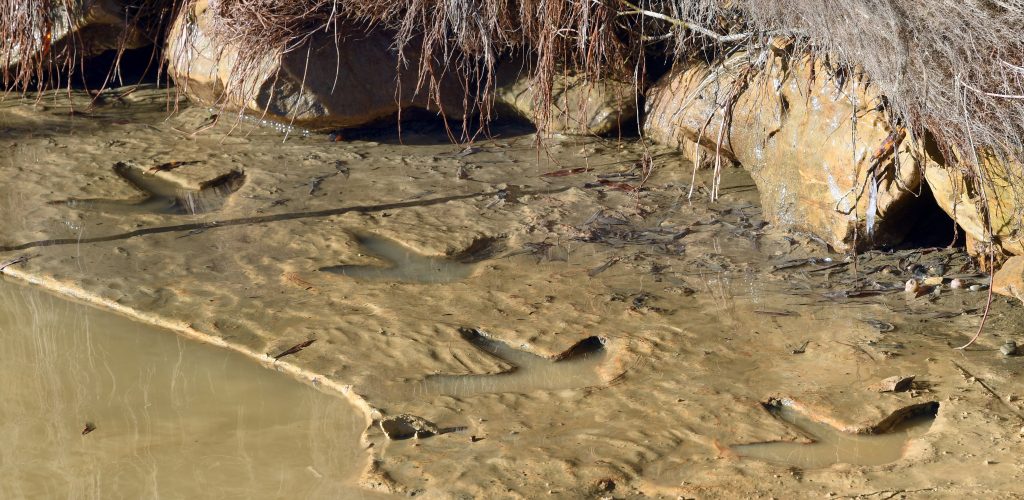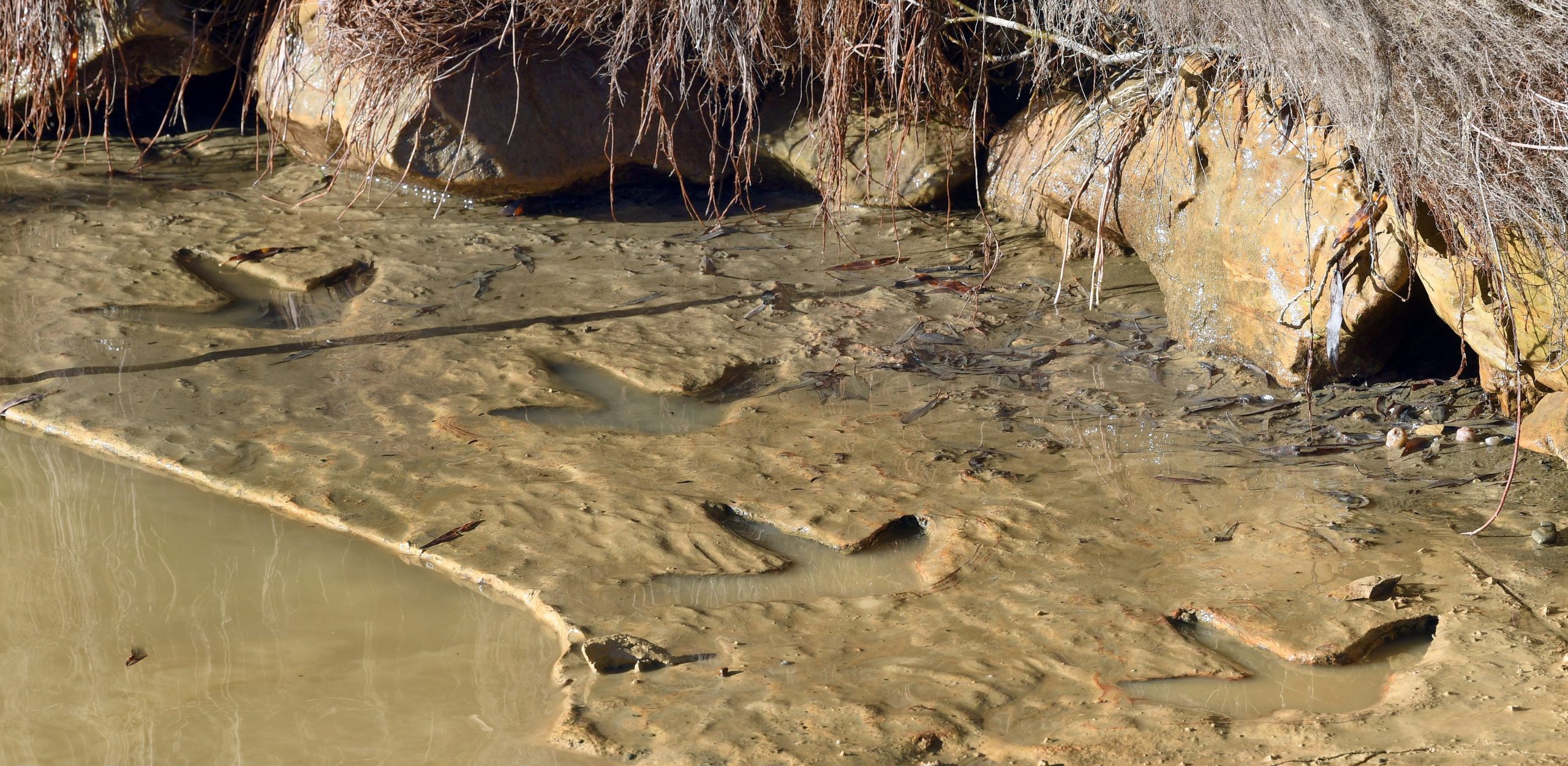Four years after moa footprints were discovered in the Kyeburn riverbed, scientists have released some long-awaited updates on the mysterious Maniototo markings.
They have attracted interest from around the globe and raised several questions: How tall and heavy was this bird? What variety of moa was it? And how long ago was it walking through the area?
A team of research scientists from the University of Otago geology department, Tu ¯hura Otago Museum, Victoria University of Wellington, the Australian Nuclear Science and Technology Organisation and Aukaha Consultancy can now answer those questions.
Lead author and museum natural science curator Kane Fleury said the seven footprints were discovered in mid-2019 by Ranfurly man Michael Johnston while he was out walking his boss’s dogs.
They went down in history as the first moa prints to be found in the South Island.
Mr Fleury said the research had established the footprint impressions were left by a member of the Emeidae family — most likely of the Pachyornis genus.
This would likely make it a relative of the heavy-footed moa, a variety noted for being particularly bottom-heavy with unusually short and thick legs.

To the researchers’ surprise, a 3D photogrammetry model of the fossil site later revealed the presence of a second moa from the Dinornithidae family.
Just one extremely faint print had been preserved in the riverbed, and its dimensions suggested the bird may have been a member of the Dinornis genus, which includes the largest-known species of moa — the South Island giant.
Fully grown females are thought to have been up to 250kg. Although the Kyeburn precursor was lighter, it was still impressive at an estimated weight of 158kg.
He said the tracks left by the Emeidae moa gave researchers more to work with, so in addition to modelling its height and weight (1095mm at the hip and 85kg), they were able to estimate that it was walking at a slow 2.6kmh.
However, the most significant finding was that the tracks were at least 3.6 million years old.
‘‘This was ascertained through cosmogenic nuclide dating, a cutting-edge technique used to calculate when sediments in the Kyeburn’s bank were buried.
‘‘Their age tells us two key things. The footprints are the second-earliest fossil record of moa and, given the dimensions of the lone Dinornithidae print, moa had attained their legendary gigantic size by the Pliocene.’’
Mr Fleury said many moa remains or traces were extremely recent in geological terms — less than 10,000 years old.
However, the Kyeburn prints were buried 3.6 million years ago, so they offered a rare glimpse into a period of moa evolution that was not well understood, making them still more significant.
‘‘We’ve cracked that door open a bit more,’’ he said.
‘‘This whole experience has been incredible.
‘‘A lot of luck goes into the fossilisation of footprints — conditions had to be absolutely perfect for these tracks to be preserved, and they had to be just right again to expose the fossils without destroying them.
‘‘The public really got on board with how spectacular this find was and had heaps of questions, so it’s a great feeling to be able to follow up with some answers.’’





